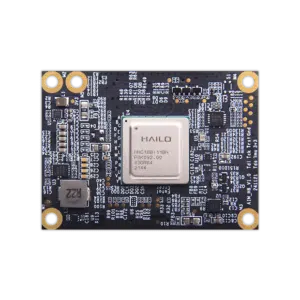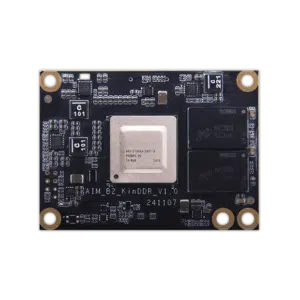How Edge AI Units Enable Better Operations
How Edge AI Units Enable Better Operations
Blog Article
The Position of Side AI Devices in Real-Time Analytics
Discovering the Benefits of Edge AI Units
Synthetic intelligence (AI) has reshaped several areas of our lives, and their software at the edge is creating dunes in the computer industry. ai on edge devices which involves deploying AI types entirely on devices like detectors, cameras, and smartphones, has appeared as a progressive way of managing data and executing tasks. Unlike cloud-reliant AI methods, edge AI operates nearer to where in fact the data is generated. That change provides a host of benefits, positioning edge AI as a game title changer in areas which range from healthcare to retail to professional automation.

Here, we'll investigate a few of the crucial advantages of edge AI units and how they're surrounding the future.
Faster Handling and Real-Time Answers
One of the most significant features of side AI is its ability to process data domestically on the unit, rather than counting on a distant cloud server. The effect? Quicker control speeds and real-time responses. As an example, in autonomous vehicles wherever every millisecond matters, edge AI may analyze environmental knowledge straight away to create decisions, such as braking or steering adjustments, without the latency related to cloud communication.
Based on new data, edge AI units may lower decision-making latency by as much as 75% compared to cloud-dependent solutions. That makes them suitable for time-sensitive purposes, such as movie analytics in detective or smart manufacturing systems.
Increased Information Privacy and Protection
Solitude and knowledge safety are rising problems in a very linked electronic world. Because side AI grips data handling locally, painful and sensitive data doesn't have to happen to be a cloud machine, minimizing the danger of interception or breaches. That localized approach offers businesses more get a grip on around their data and ensures conformity with solitude rules, particularly in industries like healthcare and finance.
The raising ownership of these units is basically pushed by privacy-conscious procedures and a desire for on-device computation. Reports show that by 2025, a lot more than 50% of AI-generated knowledge will be refined at the edge to make sure larger data security.
Reduced Dependence on Internet Connectivity
Cloud-based AI applications rely greatly on stable web connection to operate effectively. edge computing platform, on one other give, succeed in environments where connection might be unreliable or unavailable. Since side AI techniques information directly on the unit, it could work seamlessly without the necessity for constant use of a network.
As an example, in rural agricultural adjustments, side AI products may analyze weather designs, earth conditions, and plant knowledge in realtime to help with predictive farming, even when disconnected from the internet. It's estimated that edge processing can minimize information move fees by up to 70%, making it more cheaply sensible in areas with limited bandwidth.
Energy Efficiency and Lower Expenses
Edge AI units are created to improve power consumption. By running information on-device, they reduce the necessity to send substantial datasets to cloud machines, lowering both bandwidth usage and energy costs. This makes a substantial difference, especially in industries where energy efficiency is just a important factor.
Companies deploying side AI frequently knowledge paid off detailed charges because they prevent the repeating expenses connected with high-volume cloud storage and knowledge transmission. Moreover, edge AI's low-power hardware assures units is able to do complex computations without draining resources, which makes it a sustainable choice for IoT (Internet of Things) ecosystems.
Designed AI Answers for Specific Use Cases

Still another significant advantageous asset of edge AI is their capacity to deliver customized alternatives for unique scenarios. Unlike simple cloud-based AI types, edge AI methods could be fine-tuned to enhance efficiency for unique applications. For example, edge AI devices used in retail options provides customized tips and seamless checkout experiences. Similarly, in professional automation, they could check gear efficiency and anticipate maintenance wants with large precision.
That adaptability has led to an projected 30% development in edge AI deployments before year, showing their value in offering targeted alternatives across diverse industries.
Driving Invention with Edge AI
Side AI devices have reached the lead of innovation, providing unparalleled speed, privacy, and efficiency. By enabling real-time decisions, safeguarding sensitive and painful data, reducing reliance on connectivity, and promoting power savings, they provide an intelligent, scalable answer for a variety of applications. Furthermore, as technology advances, the integration of edge AI is anticipated to increase, unlocking new possibilities and redefining how organizations influence AI.
Report this page